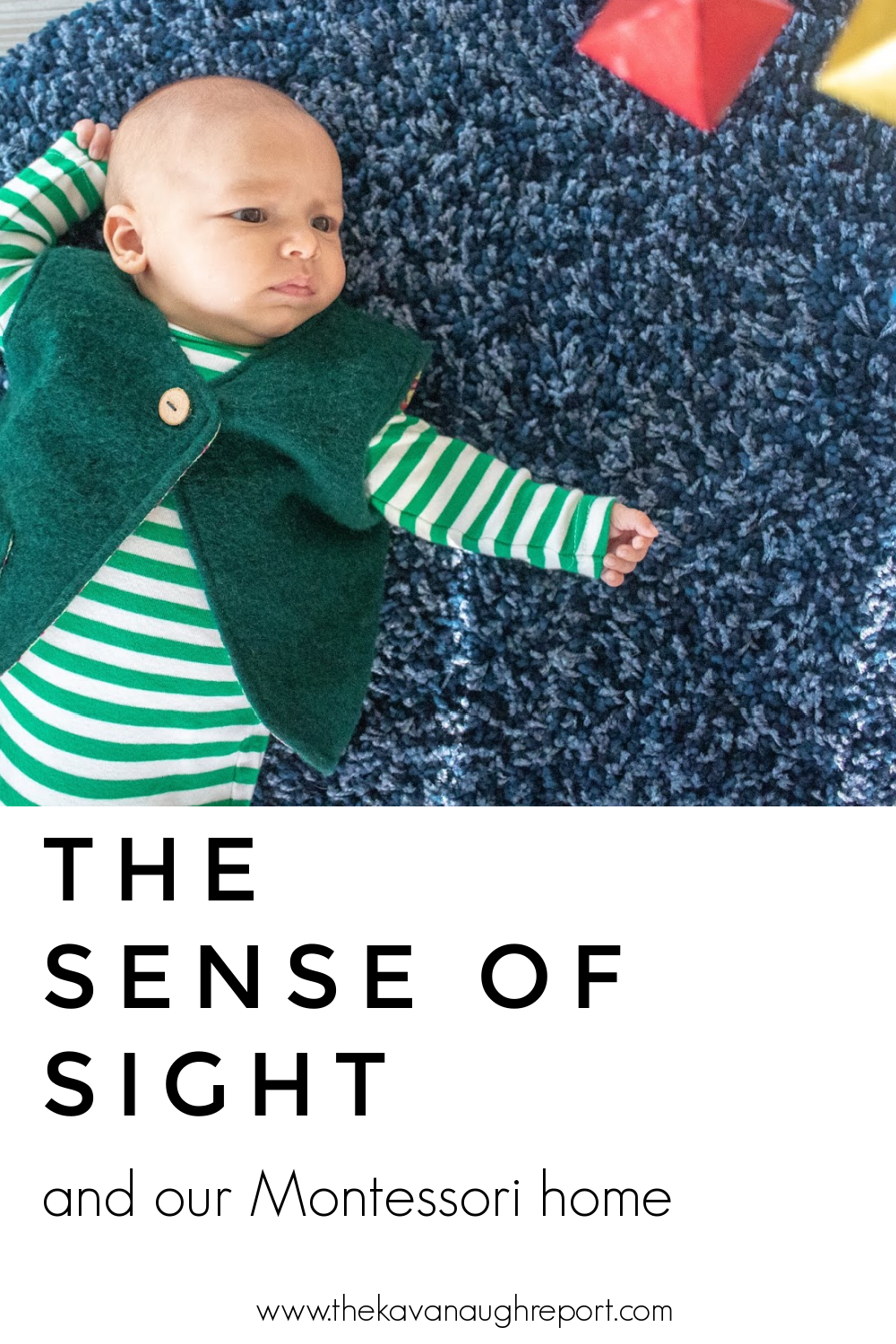I've said this before, but developing the senses is such an important concept in Montessori that I want to talk about it again (and likely again and again!) It is through the senses that children learn, grow and develop. This learning does not stop at the doors of the classroom, or magically appear when a child enters school. It's through the senses that a child is constantly and continuously developing -- from birth.
The training of the senses must begin in the formative period of life if we wish to perfect them later through education and make sense of them in any particular human skill. Maria Montessori
Last time I dove into the sense of hearing, but here I want to examine the visual sense. A child's sense of vision will be so important for so much learning. Now, I'm not talking eye sight here, but their ability to track objects, to identify subtle differences, to focus on specific parts of an object - to use their eyes for deeper evaluation.
Babies and Young Toddlers
The visual sense is one of the most under developed in infants when they are first born. As a result, some of the first Montessori materials visually engage babies. This is exactly where Teddy is right now, every day engaging more and more with his eyes. Over time these materials get more complex, to strengthen a child's eyes. Here are some ways you can help your baby and young toddler to develop their sense of vision:
Low Art. Including low art in your space is another great way to stimulate your child's sense of sight. It gives something that visually calls to a child. Art provides not only great language opportunities but the chance to scan images and pick out little details all of which strengthen visual perception.
Older Toddlers
For older toddlers, they can start to work on more visually challenging work. They often start to distinguish between various objects based on things that they see. And eventually this leads to sorting and classification of the world around them. At almost 3, Gus has been in this stage for awhile and is still very interested in this kind of work. Here are a few things that can help to strengthen an older toddler's visual sense:
Classification Work/Sorting Work. This work includes a large variety of work like matching or sorting by color, size, pattern, or shape. This can also include sorting by type of thing (animal/vehicle/plant/etc.) Basically, these are activities where a child is using their visual sense to discriminate between objects and pictures. There are toys that can be used, but often DIY activities are easy to create for this kind of work. Here are some examples:
Puzzles. Simple puzzles are amazing for a lot of reasons, not only do they help to promote fine motor skills, but they help toddlers to see smaller details within a larger picture. They need to scan an image and figure out where it needs to go.
Traditional Montessori Work. Many of the traditional Montessori sensorial work aims to help a child develop their visual sense. While this work isn't often necessary to have at home, I wanted to mention it because it can be such an important part of a child's first year in a Children's House (starting between 2.5 and 3 years old). This work includes Knobbed cylinders/Pink Tower/Brown Stairs/Red Rods/Color Tablets and more.
Preschool
Preschoolers are ready for even more visual challenges as they gear up for reading and writing. Their eyes are well developed and ready for more challenge. These challenges continue with the traditional Montessori materials including the binomial and trinomial cubes, geometry cabinet, and decanomial square. Again, these materials are not really necessary to always have at home. But, here are some ways you can support your preschooler's growth in this area:
Patterning Blocks/Games. These are things that focus on eyesight for completing some or part of the work. They are asking children to distinguish patterns/colors/sizes with their eyes and use that information to put something new together. These include:- What's Missing: Gather a few objects, let your child look at them, then have your child close his/her eyes and remove one. Let your child look again and guess what is missing.
- What's Different Book
- I Spy Books based on your child's interests
Hopefully these ideas give you some inspiration on how to help your child develop their sense of vision as they move through their early years. For us these are the first steps toward more advanced academic work and an exciting phase to watch!
What stage of development is your child at?
Read about how to support other senses in Montessori environments here: Hearing | Visual | Taste | Touch | Vestibular





